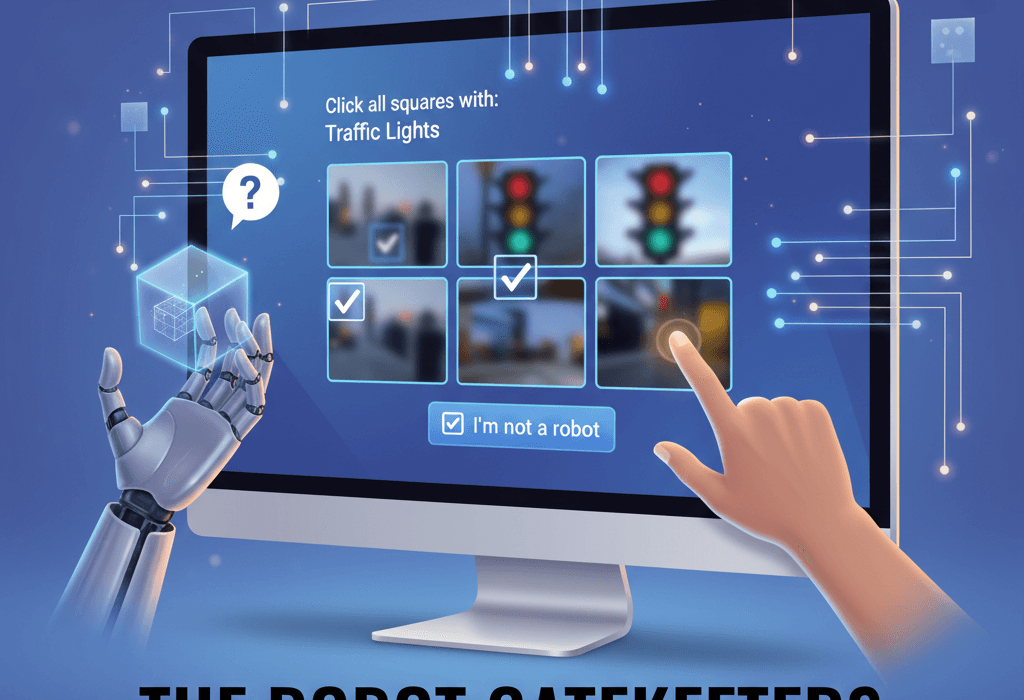We’ve all been there. You’re logging in, purchasing concert tickets, or just trying to read an article, and up pops a grid of fuzzy images requiring you to click on all the boxes with traffic lights, crosswalks, or occasionally, even more esoteric things. “I am not a robot,” you obediently check, only to be shown another, tougher test. It’s irritating, time-consuming, and raises the question: with the advanced AI era, why do we still have to demonstrate our humanity to a computer?
The reason, as with so much of the digital universe, is a compelling mix of security, information, and the perpetual humans-versus-machines arms race.
What’s in a CAPTCHA? More Than Meets the Eye
CAPTCHA is an abbreviation for “Completely Automated Public Turing test to tell Computers and Humans Apart.” That’s a bit of a tongue twister, but the principle is straightforward: create a test that a human can easily pass but which is hard for a computer. The most ubiquitous form you’ll find, reCAPTCHA (owned by Google), has come a long way from those wobbly, unreadable words of the past.
1. Bot Prevention: This is the most straightforward reason. Sites are under siege all the time by malicious “bots” – computer programs that spam comments, create spurious accounts, scrape data, or even bring the site down with a denial-of-service attack. CAPTCHAs serve as a virtual bouncer, keeping these automated pests out and letting actual humans interact with the site. This prevents websites from fraud, keeps data intact, and provides a better experience for actual users.
2. AI Training (The Hidden Agenda): This is where it gets fun, and why image puzzles are so ubiquitous. Each time you recognize a bicycle, a bus, or a street sign in a reCAPTCHA, you’re not only demonstrating your humanity – you’re quietly training Google’s artificial intelligence.
Consider this:
Image Recognition: Your taps make Google’s image recognition algorithms better, which are critical for self-driving vehicles, image searching, and literally hundreds of other AI applications. You’re showing the AI what a traffic light looks like when viewed from different angles and degrees of distortion.
Text Recognition: The original text-based CAPTCHAs used to employ words from books that had been scanned, which computers were unable to read. By retyping them, you were assisting in digitizing books and enhancing OCR (Optical Character Recognition) technology.
Thus, as you’re verifying you’re not a machine, you’re also assisting in making machines smarter.
Why Are They Getting Harder? The Arms Race Continues
If you think CAPTCHAs are getting progressively tougher, you’re not crazy. There are several reasons why they are getting harder:
Sophisticated Bots: At the same time that AI is becoming more intelligent, so too are the bots that try to get around these tests. AI has become incredibly adept at cracking image recognition riddles. To stay one step ahead, CAPTCHA creators need to create more sophisticated and nuanced challenges that still take advantage of unique human cognitive capabilities.
Behavioral Analysis: Recent reCAPTCHA tends to have a “No CAPTCHA reCAPTCHA” checkbox. When you tick this, it’s not as easy as a click. The system checks your whole browsing behavior up until that moment: your mouse swipes, IP address, browsing history, and even your click time. If your behavior appears “human-like,” it allows you to pass without being asked a challenge. If it finds something suspicious, then the image grid comes into play.
The Edge Cases: As it improves at identifying ordinary objects, CAPTCHA creators are forced to go towards more indistinct or less obvious examples. Therefore, you may receive images that have been heavily cropped, distorted, or show a small section of the object. They’re experimenting to see where the boundary lies on what existing AI can handle.
The Future of Proving Your Humanity
The unassuming CAPTCHA, originally a straightforward defense measure, has now become a strong, if at times frustrating, tool for security and AI research. While the endless need to assure you’re not a bot can be frustrating, it’s a necessary evil in an ever-more automated world.
As artificial intelligence advances, the way we can tell humans apart from machines will surely change. Maybe in the future, our peculiar human intuition, creativity, or even emotional reactions will be the final deciding factor. Until then, keep clicking those traffic lights – you’re doing more good than you know.


